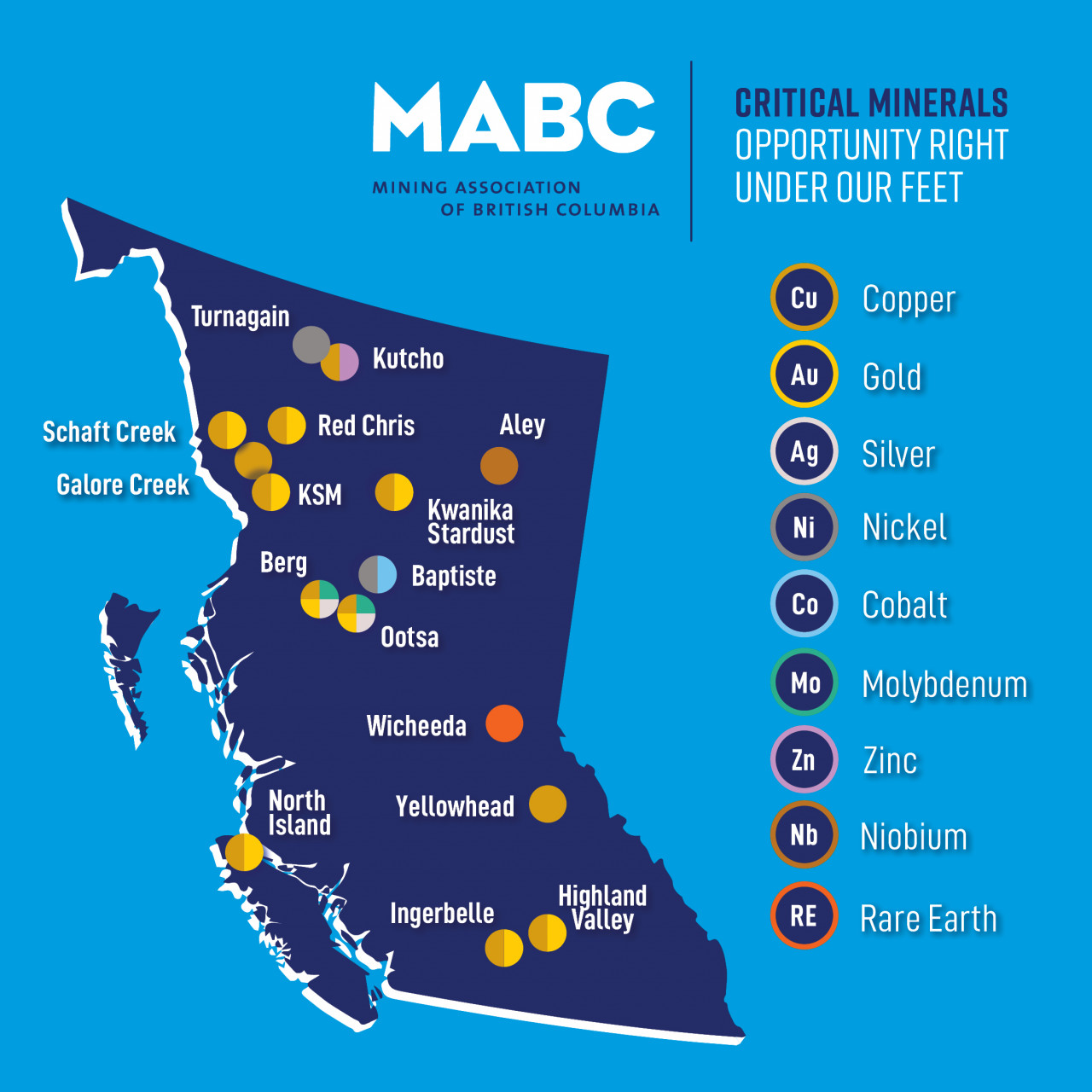Critical Juncture for B.C.’s Critical Minerals
The mining sector represents 35,000 rural and urban jobs, makes up $7.3 billion of provincial GDP, 28 percent of B.C's goods exports and approximately $1 billion in provincial government revenue to support services.

The mining sector represents 35,000 rural and urban jobs, makes up $7.3 billion of provincial GDP, 28 percent of B.C's goods exports and approximately $1 billion in provincial government revenue to support services.
Critical minerals are those that have been identified by the federal government as essential to the energy transition -- metals and minerals such as copper, cobalt, nickel and lithium. Critical minerals are the building blocks of the digital and green economy.
B.C is home to 16 of Canada's 31 critical minerals and is Canada's largest copper and only molybdenum producer. This month may mark a pivotal moment for the future of the mining industry in British Columbia.
Investments at stake
On January 8th an independent economic impact analysis conducted for the Mining Association of British Columbia (MABC) examining 14 potential critical mineral mines and two mine extensions was released.
The analysis found the 16 mines represent $36 billion in near term investment, 300,000 person-years of employment and $11 billion in tax revenues. The long-term economic impact of these mines over several decades of operation could be nearly $800 billion.
The study also assessed the economic benefits resulting from advancing five proposed precious metal mines, including gold. The long-term combined impact of the proposed precious metals mines over their lifespan exceeds $29.5 billion, creating over 96,000 person-years of employment and generating $5.3 billion in tax revenue.
"The realization of benefits from these critical mineral projects is dependent on BC having competitive fiscal and regulatory policies that will attract the investment necessary to grow and sustain the sector."
Michael Goehring, President and CEO of MABC
Mining's impact on the supply chain
During this year's annual Natural Resources Forum in Prince George, MABC released its "One Province, One Economy" report, prepared by iTOTEM Analytics. The report assessed the scope of B.C.'s mining supply chain and quantified the dollar value of materials, goods and services purchased by the province's 17 metal and steelmaking coal mines, two mine development projects, and two smelters.
The mining supply chain as expected plays a vast role in the rural regional centres of B.C. – with Kamloops, Prince George and Sparwood being top recipients of mining supply chain spend, with purchases totaling $377 million, $237 million and $188 million, respectively.
However, as the report highlighted, urban centres benefit significantly from mining, with the sector purchasing $1.4 billion worth of goods and services from 1,125 mine suppliers located across 18 Metro Vancouver communities in 2022. Vancouver-based companies were the top recipients of mining sector supply chain spend, with local purchases totaling $532 million.

Economic development for all
B.C.'s mining sector is helping advance economic reconciliation with First Nations through partnerships, benefit agreements, employment, and actively procuring goods and services from First Nations businesses.
The "One Province, One Economy" report assessed the benefits First Nations are deriving from B.C.'s mining and smelting industry. In 2022, 150 First Nations or affiliated businesses provided goods and services valued at close to $520 million to B.C.'s mines and smelters, accounting for 14 per cent of the B.C. supply chain spend. Services provided ranged from consulting and technical expertise to IT services, health, and safety training, among others.
Of the critical mineral mines, Goehring said the proposed projects "create genuine opportunities for First Nations partnerships to advance economic reconciliation, prosperity, and self-determination."
Critical Minerals Strategy Concerns
Just last week on January 22nd, Premier Eby, announced his government's "Phase 1" of the critical mineral strategy while speaking at the annual Association of Mineral Exploration (AME) Roundup conference.
The new strategy has 11 key actions, including the establishment of a kind of concierge service for critical minerals – the Critical Minerals Project Advancement Office – and the publication of a B.C. critical minerals atlas.
However, as both MABC's reports made clear, British Columbia's ability to meet the needs of the energy transition and do our part in the battle against climate change is contingent on having competitive fiscal and regulatory policies that will attract the investment necessary to grow and sustain the sector.
And so, while the mining industry supports the direction of Phase 1 of the critical minerals strategy, it voiced strong concern that B.C. lacks a competitive fiscal framework to attract investment.
Output Based Pricing System
Central to that fiscal framework is the soon to be implemented carbon pricing system, which targets industries emitting over 10,000 tonnes of CO2 annually. This system operates on a performance-based approach, incentivizing industries to reduce emissions below established benchmarks by offering reduced carbon pricing. Conversely, industries exceeding these benchmarks will face higher carbon pricing, creating a financial motivation to lower emissions.
B.C.'s mining and smelting industry, which already has the lowest global greenhouse gas emissions and faces the highest carbon tax in Canada and globally, finds limited options for further decarbonization. Given that our mining sector is a low-carbon producer, there is a need to calibrate the carbon pricing system to other jurisdictions. Existing policies could mean that existing and prospective critical mineral mines in B.C. would pay substantially higher carbon taxes than Ontario and Quebec.
As noted in a recent GVOBT blog post, when introduced in the early 2000s, the carbon tax was revenue-neutral for businesses. Fast forward to 2023-24 and we expect the business share of carbon tax revenues will near $1 billion and continue climbing. According to estimates, the carbon tax has been a net tax to business of nearly $2 billion in just three years.
Being ambitious on climate requires us to be bullish on mining. In order to realize our potential, we must ensure that our policies are competitive and are driving clean investment in our economy instead of elsewhere.